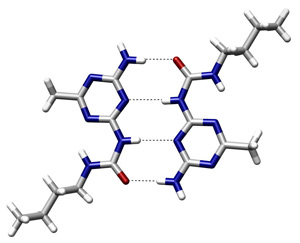Hydrogen has always been an intriguing alternative energy source.
Pound for pound, it contains almost three times as much energy as natural gas, and when consumed, its only emission is pure, plain water.
The problem with this "miracle fuel" has always been the price.
The capital expenditures required to transport, store, and deliver hydrogen in large commercial volumes are staggering.
Even after improvements in the prototype models, it still costs almost $200 million per mile to move the fuel in a properly encased pipeline. And without the infrastructure, there won't be a "hydrogen economy."
 But that doesn't mean hydrogen as an energy source is completely without merit - far from it.
But that doesn't mean hydrogen as an energy source is completely without merit - far from it.
In fact, aside from local generation for local use, hydrogen may now be on the verge of solving one of energy's biggest obstacles.
It's the problem of storage, and a new "hydrogen battery" may just hold the key...
Storage: Energy's Biggest Roadblock
Of course, as many of you know, I have been arguing in favor of a wider energy balance for years now. This approach emphasizes a greater number of available energy sources, while also improving their interchangeability.
The objective is to create as seamless an energy fabric as possible, using multiple flows of energy to meet demand with a result of increased efficiency.
This forward-looking equation is going to require more renewable energy sources, especially solar and wind. You see, unlike other approaches, mine does not require a "silver bullet."
It's not dependent upon the development of a new source of energy to wean society from crude oil. Rather, the goal is to integrate all of the available energies into a flexible whole.
In this case, the more genuinely distinct energy sources a system has, the better.
There's only one problem: the elusive ability to store energy for later use. This shortcoming is true across the board when it comes to generating electricity, but it's especially problematic for wind and solar power.
This single limitation is the biggest roadblock to efficiently delivering electricity on demand from a range of sources, including renewables.
In turn, that has created a race to develop a high-volume battery, which would have a huge impact on how much energy costs and the ease with which we can use it.
And that's where hydrogen may prove to be the decisive key.
Progress is already well underway...
A "Hydrogen Battery" Breakthrough
In fact, the Japanese mega-corporation Toshiba Corp. (OTCMKTS: TOSBF) recently achieved a significant advance in large-scale electricity storage using hydrogen. It just may be the solution the energy market is looking for.
Two weeks ago, the Nikkei Asia Review (NAR) announced the development as follows:
"Toshiba has developed a way to use hydrogen to store large quantities of electricity for extended periods of time, with a storage system deploying the technology potentially reaching the market in 2020.
"The Japanese company will first provide a system capable of storing up to 40,000 kilowatt-hours of electricity - enough to power 10,000 households for eight hours. The system will be made by assembling fuel cells, electrolysis equipment and hydrogen storage tanks on a 600 square meter plot. Hydrogen obtained through electrolysis will be stored in the tanks and reacted as needed with oxygen in the air via the fuel cells to produce electricity."
OK, so far this looks like another attempt to serialize hydrogen fuel cells. There have been some notable successes in fuel cell use (especially by the military), but there is much more here, as NAR notes.
"Energy conversion efficiency is a measure of how much energy can be reproduced when the energy is made to change forms. Toshiba's system has an energy conversion efficiency of 80%, exceeding the 70% efficiency of pumped-storage hydroelectricity, in which water is pumped to a higher elevation and then released to generate power.
"The energy storage efficiency of typical storage batteries is thought to be around 80%, but massive quantities of electrode materials are necessary to increase capacity. A 40,000kwh storage battery would cost nearly 2 billion yen ($16.8 million). Such batteries also have problems with long-term storage due to self-discharge.
"If safety technology to prevent leaks can be secured, the capacity of a system using hydrogen could be increased simply by enlarging the size of the tanks. The total cost including installation and operation would reportedly be reduced by half compared with existing storage batteries."
That savings certainly increases the interest and the viability, since reducing the cost of very large-capacity storage options has always been essential.
But the real difference in this approach is in its ability to give solar and wind power enough pricing leverage to transform the grid.
As NAR puts it:
"To producers of renewable energy such as solar and wind power, the ability to store surplus electricity at low cost would help to cushion the risks from unsold output. The technology is also envisioned for use by local municipalities as an emergency power source during disasters. Toshiba plans to install a small-scale test system capable of storing 350kwh of electricity in Kawasaki this spring."
Given these new developments, we may be on the verge of something quite important here.
So don't be so quick to write off the value of hydrogen to the energy markets. I'll have more on this as it develops.
The Projected Future Size of the Renewable Energy Sector Is Eye-Opening. The global biofuels market alone is expected to reach $23.9 billion by 2020. And North America is poised to generate the largest share of revenue. Here's where this lucrative market is headed...
About the Author
Dr. Kent Moors is an internationally recognized expert in oil and natural gas policy, risk assessment, and emerging market economic development. He serves as an advisor to many U.S. governors and foreign governments. Kent details his latest global travels in his free Oil & Energy Investor e-letter. He makes specific investment recommendations in his newsletter, the Energy Advantage. For more active investors, he issues shorter-term trades in his Energy Inner Circle.



